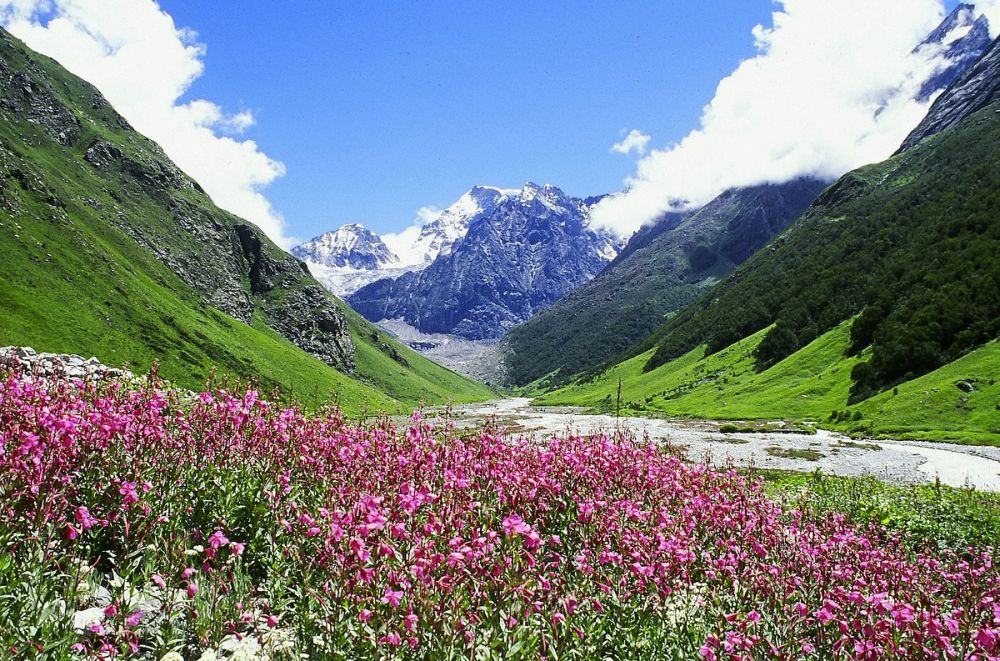

The Valley of Flowers National Park, located in the Chamoli district of Uttarakhand, India, is renowned for its enchanting beauty and diverse flora and fauna. The park's history as a tourist destination dates back to 1931 when it was discovered by British mountaineer Frank S. Smythe. Smythe stumbled upon the valley after a successful expedition of Mount Kamet and was captivated by the sight of wildflowers blanketing the valley floor. He later wrote about his experiences in his book titled 'The Valley of Flowers' which unveiled the beauty of the valley to the world.
The publicity from Smythe's book gradually turned the Valley of Flowers into a place of interest for botanists, nature lovers, and trekkers. In 1982, the valley was recognized as a National Park, and in 2004, it was inscribed as a UNESCO World Heritage Site, which further fueled its popularity among tourists worldwide.
Hemkunt Sahib, also known as Gurudwara Shri Hemkunt Sahib Ji, is a sacred pilgrimage site for Sikhs located near the Valley of Flowers at an elevation of over 15,000 feet above sea level. It is dedicated to the tenth Sikh Guru, Guru Gobind Singh Ji. The history of this pilgrimage site is rooted in the Guru's autobiographical account, Bachitra Natak, where he described a meditative retreat at Hemkunt 'Lake of Snow'. The present-day Gurudwara was established in the 1960s after Major General Harkirat Singh, Sant Sohan Singh and other passionate Sikhs located and constructed it.
Tourism Trends
Over the years, the Valley of Flowers and Hemkunt Sahib have witnessed changing tourism trends. Initially, both places attracted a niche segment of tourists – the Valley of Flowers lured serious trekkers and botanists while Hemkunt Sahib was visited by religious pilgrims. Today, a broader spectrum of visitors including amateur trekkers, photographers, adventure enthusiasts, and spiritual seekers are seen.
With the advent of social media, the Valley of Flowers has seen a surge in popularity as vibrant images and tales from travelers' treks circulate online, enticing nature enthusiasts from across the globe. The trend of experiential and sustainable travel has also affected tourism in the region, encouraging responsible practices that preserve the park's natural beauty and cultural heritage.
The Indian government and various NGOs are actively engaged in implementing measures to protect the environment and local communities. These efforts ensure that both the Valley of Flowers National Park and Hemkunt Sahib remain pristine and welcoming for future generations of tourists.
To accommodate the growing number of visitors, the infrastructure in the region has developed, with more guesthouses and eateries emerging each year. However, access is still regulated to both sites to minimize environmental impact, with the Valley of Flowers only open from June to October and Hemkunt Sahib from May to October, weather permitting.
Conclusion
In conclusion, the Valley of Flowers and Hemkunt Sahib have established themselves as destinations of remarkable beauty and spiritual significance. Through coordinated conservation efforts and responsible tourism practices, they continue to be a testament to the sustainable coexistence of humankind with nature.